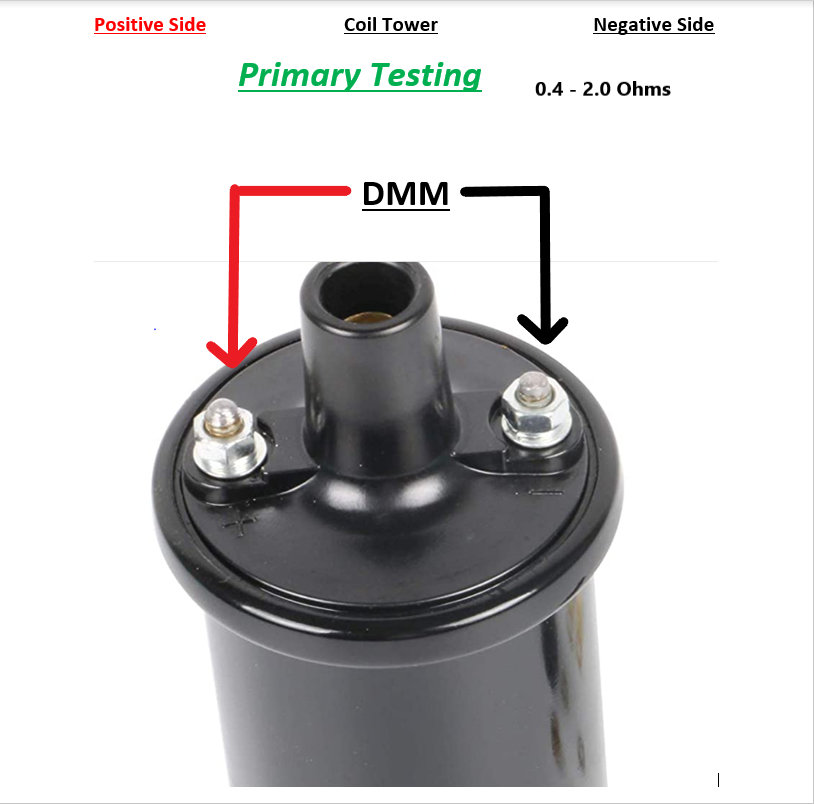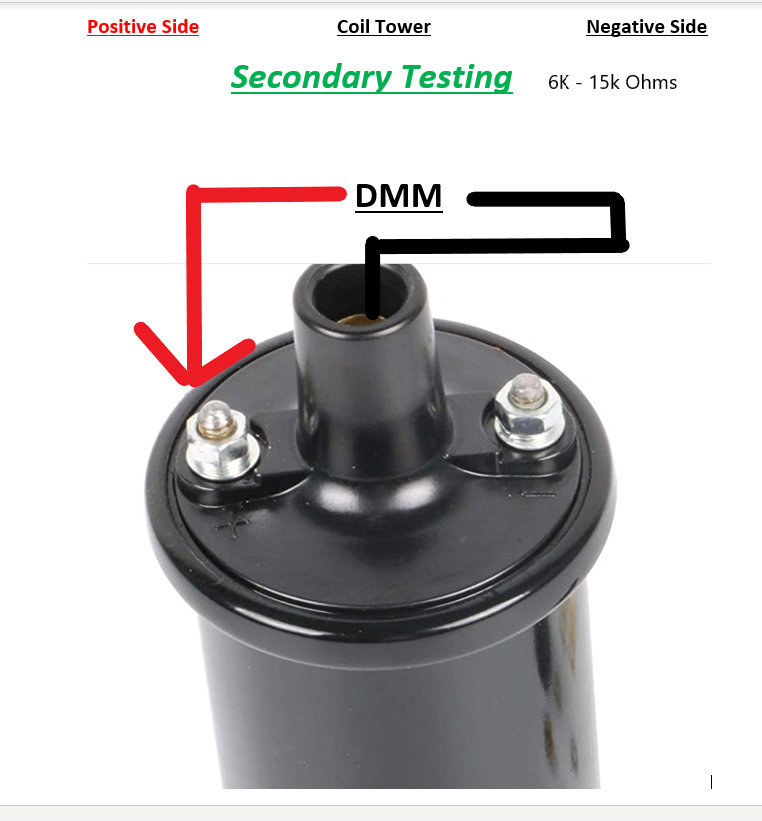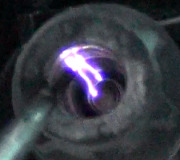Hi,
Because of the model year, I have no schematics to work with. So, I have a few questions. First, I believe in 1973 you have a single coil and points and condenser in the distributor. Is that correct?
If you lose that much power with the coil connected, it could be due to an internal short in the distributor, or the wiring to it can have a faulty connection or is broken internally (under the insulation).
When you connect it and it drops, wiggle the wire supplying the power to see if the voltage is consistent or if it fluctuates.
If it doesn't change, we need to confirm there isn't an internal short in the coil. You will need a digital multi-meter (DMM). To check it:
1) Disconnect all wires to the coil.
2) Turn the DMM to ohms to identify resistance.
Primary Resistance Check
3) Primary Resistance check: Touch the red DMM terminal to the + side of the coil and the black terminal to the - side of the coil.
4) Expected Resistance: Many manufacturers indicate variations in the acceptable range, but in most cases, resistance will fall between 0.4 and 2.0 Ohms.
Secondary Resistance Check
5) With the coil still disconnected, place the DMM red terminal on the + side of the coil.
6) Place the DMM black terminal to where the coil wire would go (coil tower).
7) Expected Resistance: Many manufacturers indicate variations considered in the acceptable range. However, in most cases, resistance will fall between 6K and 15K Ohms.
I tried to draw a couple of pics below to help identify where the wiring goes from the DMM.
If the readings are far from what I indicated, I suspect the coil is shorted internally and needs to be replaced.
Let me know if this helps.
Take care,
Joe
See pics below.
Images (Click to make bigger)
Friday, February 11th, 2022 AT 5:24 PM





